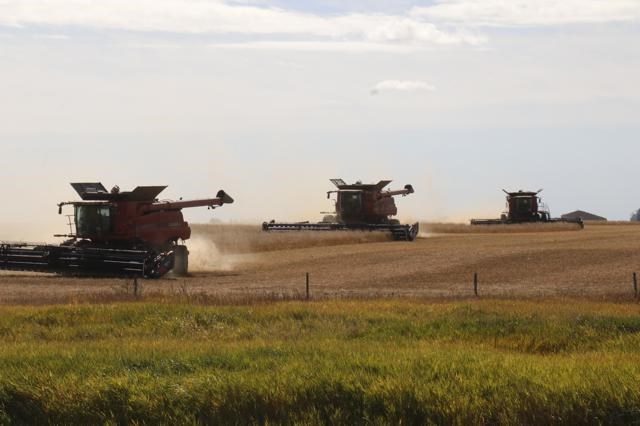Producers in the southeastern region were stalled in their operations by rain and snow in the past week, including more wet snow on Friday morning.
The harvest is 89 per cent complete in the southeast, which is still ahead of the five-year average of 80 per cent completion by this time of year. Crop district 2A, the Weyburn area, is at 91 per cent completion, while 3ASE (Radville-Lake Alma-Minton areas) is about 98 per cent done.
Provincially, harvest is 73 per cent combined, with 20 per cent of the crop swathed or ready to be straight-combined. The five-year average provincially is for 78 per cent of the crops to be combined by this time.
Some producers were able to get back into the fields for a couple of days before the additional snow fell on Friday. Much of the grain is coming off the field tough and is being placed into aeration and drying bins. Warm, dry and windy days will be needed to finish the remainder of the crops.
Topsoil moisture conditions on crop land are rated as 53 per cent adequate, 39 per cent short and eight per cent very short. Hay land and pasture topsoil moisture is rated as 46 per cent adequate, 43 per cent short and 11 per cent very short.
Yield estimates as of Oct. 1 are about average overall, although they vary greatly across the region.
Winter wheat in the southeast region saw an average of 40 bushels per acre, fall rye had 35 bu/ac, hard red spring wheat had 47 bu/ac, other wheat varieties yielded 51 bu/ac, durum had 43 bu/ac, oats 73 bu/ac, barley 66 bu/ac, flax had 24 bu/ac, canola yielded 37 bu/ac, soybeans had 25 bu/ac, and peas had a yield of 37 bu/ac.
Canaryseed had an average yield of 1,227 pounds per acre, mustard had 1,040 lbs/ac, lentils yielded 1,648 lbs/ac, and chickpeas had yields of about 1,638 lbs per acre.
In terms of quality, spring wheat is grading about 71 per cent as No. 1, 23 per cent as No. 2, and six per cent as No. 3.
Most of the crops which remain outstanding in the southeast are canaryseed, which is 75 per cent combined; flax (49 per cent combined); canola (83 per cent combined) and soybeans (37 per cent combined).
Most of the crop damage in the past week was due to lodging from snow and rain. Some downgrading is expected at the elevator as some crops are bleached or have sprouted. Producers are also busy moving cattle, hauling bales or drying grain.
SaskPower reported there were three cases of farm machinery coming into contact with electrical equipment in the past week, to bring the total for September to 13 incidents.




